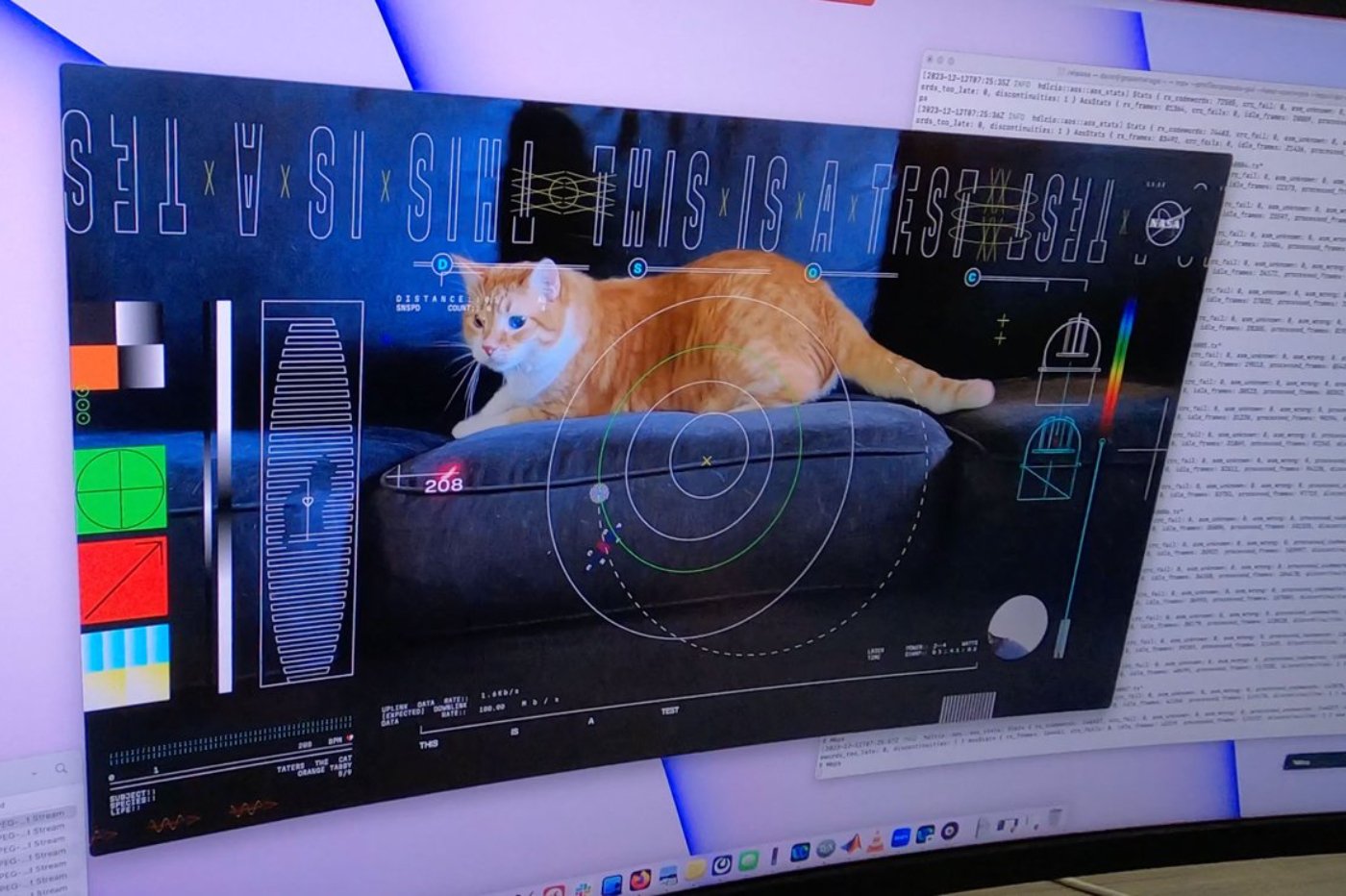NASA’s Breakthrough in Transmitting High-Definition Video Across Space
The NASA has accomplished a significant feat by transmitting a high-definition video of a cat, Taters, over a distance greater than 30 million kilometers. This performance was achieved using laser technology, a new milestone in the field of interplanetary communications!
Cats Invading Space
This 15-second video, showing Taters chasing a laser pointer on a couch, was sent from a space probe launched by a SpaceX Falcon Heavy rocket from the Kennedy Space Center in Florida on October 13th. It was transmitted in real-time on December 11th to the NASA Jet Propulsion Laboratory (JPL) in California. The signal took 101 seconds to reach Earth, with a maximum throughput of 267 Mbps, thus exceeding most high-speed internet connections.
Advancing Optical Space Communications
The transmission was carried out as part of NASA’s Deep Space Optical Communications (DSOC) mission, the space agency’s first attempt to develop communication systems beyond the Earth-Moon distance. The aim is to explore technologies capable of providing high bandwidth from the depths of space to Earth, with current radio frequencies being limited for the transmission of large volumes of data (high-quality images and videos) over long distances.
NASA’s Commitment to Optical Communications
According to Pam Melroy, Deputy Administrator of NASA, this achievement highlights the agency’s commitment to advancing optical communications, a key component for meeting future data transmission needs. This technology is vital for achieving future exploration and scientific goals, including manned interplanetary missions.
The Mission and Future Prospects
This demonstration of laser communication, launched through NASA’s Psyche mission, aims to transmit data from deep space at rates 10 to 100 times higher than the current radiofrequency systems used by space missions. As the Psyche probe heads towards the main asteroid belt between Mars and Jupiter, the test will send high-bandwidth signals as far as Mars’s greatest distance from Earth. The stakes are high: it is indeed about being able to send complex scientific information, high-definition images, and videos, which will pave the way for the next great milestone for humanity: sending humans to Mars. And perhaps cats, too.

